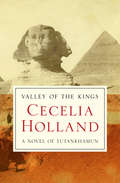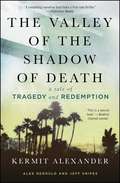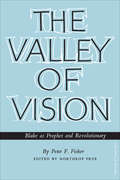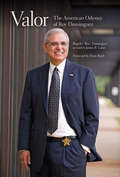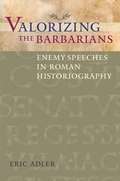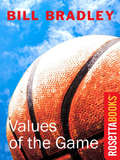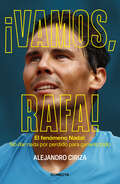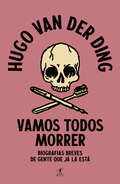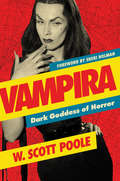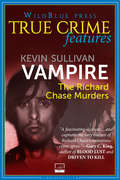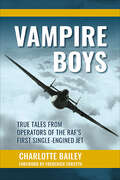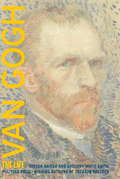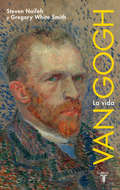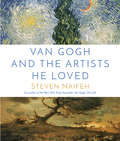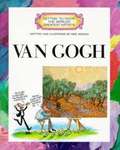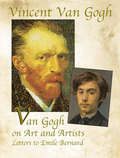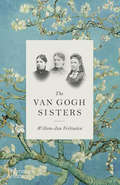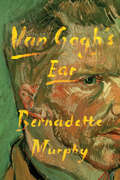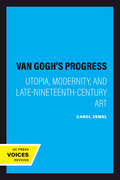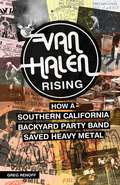- Table View
- List View
Valley of the Kings: A Novel of Tutankhamun
by Cecelia HollandAn enthralling fictional account of Howard Carter&’s famous search for the tomb of King Tut and the mystery behind the tragic death and disappearance of ancient Egypt&’s child ruler In ancient times, a boy king occupied the throne in a troubled desert land. His name was Tutankhamun. Both his reign and his life were shockingly brief, and his burial place was unknown—mysteries that would intrigue the inquisitive for centuries to come. An English archaeologist irresistibly drawn to Egypt and her secrets, Howard Carter arrives in the Middle East in the second decade of the twentieth century to uncover the hidden final resting place of the tragic child pharaoh. But from the outset his search is plagued by misfortune and obstruction—a corrupt and unbending Egyptian bureaucracy, a British lord and patron more interested in profit than in knowledge, and Carter&’s own inability to connect with his fellow human beings. Still, he will not be deterred from his obsessive hunt for the answer to one of the most astonishing puzzles in the history of the world. In her magnificent novel Valley of the Kings, Cecelia Holland has created two worlds, brilliantly re-creating Egypt in the 1920s and in the time of Tutankhamun. A stunning tale of determination and discovery, brimming with color, mystery, and life, it confirms her standing as one of the true masters of historical fiction.
The Valley of the Shadow of Death
by Jeff Snipes Kermit Alexander Alex GerouldIn this heart-wrenching memoir, former NFL star Kermit Alexander tells the devastating true story of the horrific massacre of his family and his subsequent years of despair, followed by a spiritual renewal that showed him a way to rebuild his family and reclaim his life.On the morning of August 31, 1984, in the South Central section of Los Angeles, three armed men broke into a house, brutally murdering two women and two young boys. The victims were Ebora Alexander, Dietra Alexander, Damani Garner, and Damon Bonner--the mother, sister, and nephews of retired All-Pro cornerback for the San Francisco 49ers Kermit Alexander. In his own words, Kermit Alexander finally shares the full story of what happened to his loved ones and the aftermath of that tragic day. He recounts the hours leading up to the massacre, and how afterward he lost himself in the LA underworld, pleading, bribing, and threatening in a search for answers. He describes his journey through the "wilderness" of despair--the years of isolation living out of his car, broke, depressed, and sick. We also learn about his coming-of-age in 1950s LA, the following decade he spent in the NFL, the events leading up to that fateful August day, and finally the shocking truth behind the murders. Kermit opens up about his darkest hours, but also what it took to turn his life around, rebuild his family, and ultimately find peace. Ominous and intense, powerful and uplifting, tragic and triumphant, The Valley of the Shadow of Death is more than a rendering of one man's adversity; it's testament to the value of family and the resilience of the human spirit in the face of overwhelming loss.
The Valley of Vision: Blake as Prophet and Revolutionary (University of Toronto Department of English Studies and Texts #9)
by Peter Fisher Northrop FryeThe author of this important contribution to the study of Blake was tragically drowned in a sailing accident when he had almost completed it in manuscript. His was a critical mind of singular erudition and power. As is abundantly evidenced in these chapters which Northrop Frye has prepared for publication. Fisher had made a careful study of Oriental philosophy and of Plato and the Neo-Platonists and this background enabled him to make an original and fruitful analysis of his central interest, Blake. The book is not a study of Blake's sources but of his context. The author is trying to answer the question: given Blake's general point of view, why does he make the specific judgments he does make, judgments which so often seem merely glib or petulant or perverse. Blake himself, in explaining a painting, remarked: "It ought to be understood that the Persons, Moses & Abraham, are not here meant, but the States Signified by those Names." Fisher explains what Blake meant by "states," and shows that such names as Plato, Bacon or Newton, or such terms as "priest" or "deist" in Blake's writings, refer not to individuals but to cultural forces in Western civilization, the influence of which accounted for the social conditions that Blake attacked. The attack itself, Fisher shows, was based on a revolutionary dialectic, a sense of the underlying opposition between reactionaries committed to obscurantism and social injustice, the "Elect" as Blake calls them, and the prophets committed to a greater vision (the "Reprobate"), with the mass of the public (the "Redeemed") in between.
Valor: The American Odyssey of Roy Dominguez
by Rogelio "Roy" DominguezThe son of Hispanic immigrants, Rogelio "Roy" Dominguez grew up in gang-plagued Gary, Indiana. With strong family support, he managed to beat the odds, graduating with distinction from Indiana University, finishing law school after a rough start, and maturing into a successful attorney and officeholder. Yet there was more in store for Roy. Ready to start a family and embark on a career as a deputy prosecutor, he was stricken with Guillain-Barré syndrome. How he coped with and eventually overcame this debilitating affliction is a compelling part of his story. The experience steeled him to meet future crises with wisdom, perspective, and grit. An inspiring true story, Valor is also a significant and original contribution to the social, ethnic, and political history of Indiana.
Valorizing the Barbarians
by Eric AdlerWith the growth of postcolonial theory in recent decades, scholarly views of Roman imperialism and colonialism have been evolving and shifting. Much recent discussion of the topic has centered on the ways in which ancient Roman historians consciously or unconsciously denigrated non-Romans. Similarly, contemporary scholars have downplayed Roman elite anxiety about their empire’s expansion. In this groundbreaking new work, Eric Adler explores the degree to which ancient historians of Rome were capable of valorizing foreigners and presenting criticisms of their own society. By examining speeches put into the mouths of barbarian leaders by a variety of writers, he investigates how critical of the empire these historians could be. Adler examines pairs of speeches purportedly delivered by non-Roman leaders so that the contrast between them might elucidate each writer’s sense of imperialism. Analyses of Sallust’s and Trogus’s treatments of the Eastern ruler Mithradates, Polybius’s and Livy’s speeches from Carthage’s Hannibal, and Tacitus’s and Cassius Dio’s accounts of the oratory of the Celtic warrior queen Boudica form the core of this study. Adler supplements these with examinations of speeches from other characters, as well as contextual narrative from the historians. Throughout, Adler wrestles with broader issues of Roman imperialism and historiography, including administrative greed and corruption in the provinces, the treatment of gender and sexuality, and ethnic stereotyping.
The Value of Emily Dickinson
by Mary LoeffelholzThe Value of Emily Dickinson is the first compact introduction to Dickinson to focus primarily on her poems and why they have held and continue to hold such significance for readers. It addresses the question of literary value in light of current controversies dividing scholars, including those surrounding the critical issue of whether her writings are best appreciated as visual works of manuscript art or as rhymed and metered poems intended for the inner ear. Mary Loeffelholz deftly incorporates Dickinson's distinctive biography and her historical, religious, and cultural contexts into close readings, tracing the evolution of Dickinson's style. This volume - which considers not only the complex history of Dickinson's poems in print, but also their future in digital formats - will be an invaluable resource for undergraduate and graduate students seeking to better understand the importance of this seminal American poet.
Values of the Game
by Bill BradleyThis New York Times bestseller offers &“slam-dunk lessons in teamwork and character&” from the NBA hall of famer and former US senator (People). Bill Bradley, whose varied career highlights include a gold-medal win in the Olympics, two world championship victories with the New York Knicks, and three terms as a US senator from New Jersey, writes here about the game that helped form his philosophies for success in basketball and in life. Each chapter is devoted to a value that is fundamental to Bradley&’s vision of a purposeful life: passion, discipline, selflessness, respect, perspective, courage, leadership, responsibility, resilience, and imagination. In each, he illustrates these principles with personal anecdotes and observations, creating a concise philosophical treatise that readers can apply to their own lives. With an introduction by Bradley&’s friend and teammate Phil Jackson, this &“love letter to basketball . . . is every bit as prescient, thoughtful, and just plain valuable a work as you&’d expect from a man who never approaches any task without a full commitment&” (The Boston Globe). &“Bradley hits nothing but net with Values of the Game. Call it The Book of Virtues meets hardwood.&” —USA Today &“This may be the single most important present a parent can give a sports-loving child.&” —The Dallas Morning News
¡Vamos, Rafa!: El fenómeno Nadal: No dar nada por perdido para ganarlo todo
by Alejandro CirizaRafa Nadal, la superación de un campeón con los pies en la tierra. Rafa Nadal es considerado el mejor tenista de la historia sobre tierra batida y uno de los mejores jugadores de todos los tiempos. En este libro, el autor profundiza en la figura y en el fascinante viaje profesional del mallorquín, desde sus inicios hasta la madurez. Nadal es sinónimo de victoria, trofeos y gloria, pero al mismo tiempo, su legado significa sacrificio, constancia, respeto. Este relato incluye los pasajes triunfales de su carrera, así como las derrotas, el sufrimiento y los obstáculos del camino que han forjado a un campeón infinito e inolvidable, prototipo de una competitividad incansable y de una extraordinaria capacidad de superación. «Al final, lo más importante es ser buena gente», afirma el protagonista en uno de los encuentros con Alejandro Ciriza, que traza una completa radiografía del tenista a partir de los testimonios recopilados durante la década que ha seguido sus pasos alrededor del mundo. A las reflexiones del tenista se añaden las de otras personas de su entorno, rivales, especialistas y compañeros y compañeras del circuito que subrayan la singularidad de un deportista universal. Reseñas:«En estas páginas hay parte de historia, parte de circunstancias, de carácter, de formación y de las consecuencias de todo ello. No es una biografía al uso, aunque el hilo conductor sea la trayectoria de Rafael desde sus inicios tenísticos. Alejandro Ciriza ofrece una incursión fiable, profunda, amena y sorprendente a las entrañas del tenis y del tenista protagonista de este libro».TONI NADAL, entrenador y conferenciante, autor del prólogo Uno de los nuestros«Rafa Nadal es la personalización del ideal deportivo. Como todo héroe, desafía a sus rivales llevándolos hasta el límite, pero antes se desafía a sí mismo desde la cabeza más consistente que he visto nunca. Consistente para ignorar el cansancio, la presión, en ocasiones hasta la inferioridad técnica. Consistente para enfocarse en las cuestiones críticas del juego, para ganar el pulso psicológico con la autoridad de su bravura, para llenar la cancha de sudor, de inteligencia y de emoción. Nunca vi una competitividad más salvaje para someter a sus rivales ni una ética más ejemplar en el triunfo y en la derrota. Y, sobre todo, nunca un deportista defendió mejor mi orgullo de aficionado».JORGE VALDANO, futbolista, entrenador y conferenciante «Rafa es un referente en todos los sentidos, pero lo más impresionante de él es su mente, esa capacidad de sacrificio y esa voluntad por querer seguir aprendiendo y mejorando siempre. Gran parte de su éxito procede de su equipo y su familia, que es maravillosa y a la que tengo el placer de conocer. Le han ayudado a tener muy bien amueblada la cabeza y él siempre ha mostrado mucho respeto y admiración por ellos, lo cual dice mucho de su humildad. Es el deportista más grande de nuestro país, pero no ya solopor lo que ha conseguido, sino por cómo es como persona».ONA CARBONELL, medallista olímpica en natación sincronizada «A partir de su comportamiento, su actitud y su compromiso, Rafa es el ejemplo perfecto de lo que te aporta el deporte: sacrificio, constancia, desafío, resiliencia. También empatía y crecimiento. Él nunca ha olvidado sus raíces y se ha superado día tras día, manteniendo los pies en la tierra. A mí siempre me han cautivadolos deportistas que inspiran y Nadal es uno de ellos».JUAN CARLOS UNZUÉ, futbolista, entrenador y autor del epílogo Rafa y la escuela del deporte
Vamos todos morrer: Biografias breves de gente que já morreu
by Hugo van der DingNÃO VALE A PENA ESPERAR OUTRA COISA DA VIDA A NÃO SER O SEU FIM. PORÉM, COMO DIZIA CAMÕES, HÁ AQUELES QUE SE VÃO DA LEI DA MORTE LIBERTANDO. DA RUBRICA DIÁRIA DA ANTENA 3 PARA O LIVRO, VAMOS TODOS MORRER, DE HUGO VAN DER DING, OFERECE-NOS NOTAS NECROLÓGICAS DE ANTOLOGIA. UMA PROVA DE QUE O HUMOR E A CULTURA NÃO SÃO MUTUAMENTE EXCLUSIVAS. Joana d'Arc, Pablo Escobar, Maria Antonieta, Santo António, Rosa Parks, Napoleão, Ada Lovelace, Saramago, Lucrécia Bórgia, Jesus Cristo, Sartre, Lady Di, Bob Marley: todos mortos. Não vale a pena esperar outra coisa da vida a não ser o seu fim. Porém, como dizia Camões, há aqueles que se vão da lei da morte libertando e, em vez de irem fazer tijolo, fazem História - nem sempre pelas razões mais nobres, mas é, provavelmente, para o lado que dormem melhor. Com as suas notas necrológicas dignas de antologia, Hugo van der Ding demonstra, todas as manhãs, na rubrica Vamos Todos Morrer da Antena 3, e, agora, com este livro, que nem a História tem de ser um relato aborrecido e soporífero dos grandes feitos e acontecimentos, nem o entretenimento tem de ser um atentado a todos os nossos neurónios. Até ao fecho do presente livro, das 141 almas que foram desta para melhor e cujas venturas são aqui descritas, nem uma reclamou do obituário que lhe calhou em sorte.
Vampira: Dark Goddess of Horror
by W. Scott PooleThe new book from award-winning historian W. Scott Poole is a whip-smart piece of pop culture detailing the story of cult horror figure Vampira that actually tells the much wider story of 1950s America and its treatment of women and sex, as well as capturing a fascinating swath of Los Angeles history.In Vampire, Poole gives us the eclectic life of the dancer, stripper, actress, and artist Maila Nurmi, who would reinvent herself as Vampira during the backdrop of 1950s America, an era of both chilling conformity and the nascent rumblings of the countercultural response that led from the Beats and free jazz to the stirring of the LGBT movement and the hardcore punk scene in the bohemian enclave along Melrose Avenue. A veteran of the New York stage and late nights at Hollywood's hipster hangouts, Nurmi would eventually be linked to Elvis, Orson Welles, and James Dean, as well as stylist and photographer Rudi Gernreich, founder of the Mattachine Society and designer of the thong. Thanks to rumors of a romance between Vampira and James Dean, his tragic death inspired the circulation of stories that she had cursed him and, better yet, had access to his dead body for use in her dark arts.In Poole's expert hands, Vampira is more than the story of a highly creative artist continually reinventing herself, but a parable of the runaway housewife bursting the bounds of our straight-laced conventions with an exuberant display of camp, sex, and creative individuality that owed something to the morbid New Yorker cartoons of Charles Addams, the evil queen from Disney's Snow White, and the popular, underground bondage magazine Bizarre, and forward to the staged excesses of Madonna and Lady Gaga. Vampira is a wildly compelling tour through a forgotten piece of pop cultural history, one with both cultish and literary merit, sure to capture the imagination of Vampira fans new and old.
Vampire: The Richard Chase Murders (WildBlue Press True Crime)
by Kevin SullivanThe author of The Bundy Murders tells the harrowing true story of &“one of the most bizarre serial killers in America&” (Katherine Ramsland, bestselling author of Confession of a Serial Killer). A city under siege, held captive while a psychopathic vampire serial killer instills fear in its residents, taunts the authorities, and brutally kills his victims. This book is a chilling and stomach-churning look into the life of a twisted, sick man, so evil one would wonder if he was even human. From his early days when he would liquify rabbits in a blender to drink their intestines and blood to mutilating his victims, his thirst for killing could not be satiated. This is the story of Richard Trenton Chase, the Vampire of Sacramento. It is not for the faint of heart. &“Fraught with emotion and detail . . . a must have book for all true crime enthusiasts and collectors.&” —RJ Parker, award-winning author of Escaped Killer &“Sullivan has written a fascinating account of an abnormal psyche of egregious proportions, and captures the very essence of Richard Chase&’s monstrous crime spree the citizens of Sacramento will never forget.&” —Gary C. King, author of Love, Lies, and Murder
Vampire Boys: True Tales from Operators of the RAF's First Single-Engined Jet
by Charlotte BaileySliding out of the shadows of World War Two, the de Havilland Vampire – accompanied by the distinctive whine of its Goblin engine – quickly proved itself an effective alternative to piston-powered fighters. After entering operational service with the RAF (as the service’s first single-engined jet) in 1946, the Vampire – sought by air forces the world over – held a number of notable records: the first fighter to exceed 500 mph, the first to set a world altitude record of almost 60,000 ft, the first jet to take off and land from an aircraft carrier, and the first jet to cross the Atlantic Ocean. Not bad for something built partly of wood. Throughout these pages, the ‘Vampire Boys’ bring to life the trials and tribulations of operating a first-generation jet across the globe. Through their insightful anecdotes and exceptional experiences, the reader can follow squadrons across the dusty deserts of Iraq to exercises in West Germany. First-hand tales of training, aerial handling, incidents and accidents (including the much-maligned spin characteristics) and squadron life – accompanied by unique images – bring together a portrait of a pioneering time in aviation advancement, right up to the present day with the T.11 still flying from Coventry Airport.
The Vamps: Official Book
by The VampsSince forming on YouTube in 2012, The Vamps have become one of the biggest bands in the UK. They have travelled the world with massive arena tours, sold hundreds of thousands of records, and gained legions of amazing and devoted fans. They have gone from schoolboys to superstardom in just a few years, and for the first time Connor, Brad, Tristan and James tell their story. From life on the road to dealing with their new-found fame, nothing is off-limits.Featuring exclusive behind-the-scenes photography, this is a fully-illustrated joint autobiography: the perfect book for any Vamps fan.
The Vamps: 100% Official
by The VampsSince forming on YouTube in 2012, The Vamps have become one of the biggest bands in the UK. They have travelled the world with massive arena tours, sold hundreds of thousands of records, and gained legions of amazing and devoted fans. They have gone from schoolboys to superstardom in just a few years, and for the first time Connor, Brad, Tristan and James tell their story. From life on the road to dealing with their new-found fame, nothing is off-limits.Featuring exclusive behind-the-scenes photography, this is a fully-illustrated joint autobiography: the perfect book for any Vamps fan.
The Vamps: 100% Official
by The VampsSince forming on YouTube in 2012, The Vamps have become one of the biggest bands in the UK. They have travelled the world with massive arena tours, sold hundreds of thousands of records, and gained legions of amazing and devoted fans. They have gone from schoolboys to superstardom in just a few years, and for the first time Connor, Brad, Tristan and James tell their story. From life on the road to dealing with their new-found fame, nothing is off-limits.Featuring exclusive behind-the-scenes photography, this is a fully-illustrated joint autobiography: the perfect book for any Vamps fan.
Van Gogh: The Life
by Steven Naifeh Gregory White SmithSteven Naifeh and Gregory White Smith, who galvanized readers with their Pulitzer Prize–winning biography of Jackson Pollock, have written another tour de force—an exquisitely detailed, compellingly readable portrait of Vincent van Gogh. Working with the full cooperation of the Van Gogh Museum in Amsterdam, Naifeh and Smith have accessed a wealth of previously untapped materials to bring a crucial understanding to the larger-than-life mythology of this great artist: his early struggles to find his place in the world; his intense relationship with his brother Theo; and his move to Provence, where he painted some of the best-loved works in Western art. The authors also shed new light on many unexplored aspects of Van Gogh’s inner world: his erratic and tumultuous romantic life; his bouts of depression and mental illness; and the cloudy circumstances surrounding his death at the age of thirty-seven. Though countless books have been written about Van Gogh, no serious, ambitious examination of his life has been attempted in more than seventy years. Naifeh and Smith have re-created Van Gogh’s life with an astounding vividness and psychological acuity that bring a completely new and sympathetic understanding to this unique artistic genius. NEW YORK TIMESBESTSELLER Praise forVan Gogh: The Life “Magisterial. ”—Michiko Kakutani, The New York Times “This generation’s definitive portrait of the great Dutch post-Impressionist. ”—Time “A tour de force . . . an enormous achievement . . . Reading his life story is like riding an endless roller coaster of delusional highs and lows. . . . [A] sweepingly authoritative, astonishingly textured book. ”—Los Angeles Times “Marvelous . . . [Van Gogh] reads like a novel, full of suspense and intimate detail. . . . In beautiful prose, Naifeh and Smith argue convincingly for a subtler, more realistic evaluation of Van Gogh, and we all win. ”—The Washington Post “Brilliant . . . At once a model of scholarship and an emotive, pacy chunk of hagiography. ”—The Daily Telegraph(London) ANEW YORK TIMESNOTABLE BOOK NAMED ONE OF THE BEST BOOKS OF THE YEAR BYTHE WASHINGTON POST • THE WALL STREET JOURNAL • SAN FRANCISCO CHRONICLE• NPR •THE ECONOMIST • NEWSDAY• BOOKREPORTER
Van Gogh: La vida
by Steven Naifeh Gregory White SmithPor fin, el retrato completo del incomparable maestro. Vida, muerte y genialidad de la mano de dos ganadores del premio Pulitzer Van Gogh trabajó como marchante de arte con escaso éxito, intentó convertirse en predicador, hizo incursiones como ilustrador de revistas y, por último, tuvo una carrera de pintor tan brillante como corta. Cuando murió en Francia a los 37 años sus cuadros se amontonaban, sin que casi nadie los mirase, en los armarios, desvanes y habitaciones de sus parientes, amigos y acreedores. Sin embargo, en su breve y tempestuosa vida, Vincent van Gogh había cambiado el curso del arte occidental para siempre. Trabajando con la plena colaboración del Museo Van Gogh de Ámsterdam, Steven Naifeh y Gregory White Smith, ganadores del Premio Pulitzer por su biografía de Jackson Pollock, han tenido acceso a materiales inéditos, incluyendo correspondencia familiar hasta ahora desconocida, para recrear, con increíble viveza y una sorprendente precisión psicológica, la extraordinaria vida del pintor. Los autores arrojan nueva luz sobre muchos de los aspectos inexplorados de la existencia de Van Gogh: su permanente lucha para encontrar su lugar en el mundo, su intensa relación con su hermano Theo, su errática y tumultuosa vida sentimental y sus ataques de depresión y problemas mentales. Ofrecen además un convincente e inesperado relato sobre las circunstancias de su muerte que da un vuelco a las teorías manejadas hasta ahora. Esta monumental biografía es, sin duda, el retrato definitivo de uno de los grandes genios de la historia del arte. La crítica ha dicho...«Para esta generación, el retrato definitivo del pintor. El logro más importante de Naifeh y Smith es haber logrado un ajuste de cuentas con la -locura- ocasional de Van Gogh que no pierde de vista la lucidez y la inteligencia -la profunda cordura- de su arte.»Time «Una biografía que se lee como una novela, llena de suspense y detalles íntimos.»The Washington Post «En su magistral nueva biografía Steven Naifeh y Gregory White Smith ofrecen una visita guiada por el mundo personal y la obra de este pintor holandés, iluminando la evolución de su arte a la vez que elaboran una teoría sobre su muerte destinada a crear controversia.»The New York Times «Cautivador... Los autores reconstruyen vívidamente las historias entrelazadas de su vida y su arte, retratándolo como una "víctima de su propio corazón fanático". Su excelente libro tiene el potencial no sólo de revitalizar el interés popular por Van Gogh, sino de presentar a uno de los espíritus más valiosos de la historia del arte a toda una nueva generación.»The Wall Street Journal «Una nueva teoría sobre la muerte de Vincent van Gogh puede acabar reescribiendo la historia del arte... Después de leer cientos de documentos, de libros traducidos para ellos por el museo Van Gogh y de recorrer la correspondencia del artista, la obra dibuja a un hombre más complejo de lo mostrado hasta la fecha.»El País
Van Gogh and the Artists He Loved
by Steven NaifehThe compelling story of how Vincent van Gogh developed his audacious, iconic style by immersing himself in the work of others, featuring hundreds of paintings by Van Gogh as well as the artists who inspired him—from the New York Times bestselling co-author of Van Gogh: The Life&“Important . . . inspires us to look at Van Gogh and his art afresh.&”—Dr. Chris Stolwijk, general director, RKD–Netherlands Institute for Art History Vincent van Gogh&’s paintings look utterly unique—his vivid palette and boldly interpretive portraits are unmistakably his. Yet however revolutionary his style may have been, it was actually built on a strong foundation of paintings by other artists, both his contemporaries and those who came before him. Now, drawing on Van Gogh&’s own thoughtful and often profound comments about the painters he venerated, Steven Naifeh gives a gripping account of the artist&’s deep engagement with their work. We see Van Gogh&’s gradual discovery of the subjects he would make famous, from wheat fields to sunflowers. We watch him experimenting with the loose brushwork and bright colors used by Édouard Manet, studying the Pointillist dots used by Georges Seurat, and emulating the powerful depictions of the peasant farmers painted by Jean-François Millet, all vividly illustrated in nearly three hundred full-color images of works by Van Gogh and a variety of other major artists, including Claude Monet, Paul Gauguin, and Henri de Toulouse-Lautrec, positioned side by side. Thanks to the vast correspondence from Van Gogh to his beloved brother, Theo, Naifeh, a Pulitzer Prize winner, is able to reconstruct Van Gogh&’s artistic world from within. Observed in eloquent prose that is as compelling as it is authoritative, Van Gogh and the Artists He Loved enables us to share the artist&’s journey as he created his own daring, influential, and widely beloved body of work.
Van Gogh and the Post-Impressionists for Kids: Their Lives and Ideas, 21 Activities
by Carol SabbethVincent van Gogh's admiration for and departure from Impressionism and his relationships with the other enthusiastic, like-minded artists who ultimately formed the Post-Impressionist movement are explained and explored in this collection of art activities for kids. Debunking the persistent stereotype of the mad pauper who cut off his ear, van Gogh is revealed as the serious boy who loved nature and reading and spoke four languages; the young man who took great satisfaction in the study of art, his successful career as a gallery salesman, and the "brotherhood of artists" he helped to create; and the increasingly troubled and ill man who cared deeply for family and friends and tried in vain to recover. Through a series of fun and creative projects, such as a Starry Night Peep Box, a Pointillist Sailboat, and a Japanese Fold-out Album, kids will be exposed to such art as van Gogh's vibrant landscapes, Paul Signac's Mediterranean Sea images in dazzling dots, and Paul Gauguin's tropical landscapes in unnatural colors. Aspiring young artists and history buffs will learn whether or not these famous painters always got along, how they helped each other in the process, and what made Post-Impressionist art unlike anything ever painted.
Van Gogh (Getting to Know the World's Greatest Artists)
by Mike VeneziaThis easy to follow biography is great for all ages of Vincent Van Gogh the master of brining paintings to life. Talks about his life, and details his work in simple language for children and beginners to the art world. Worth a look if you are an art lover.
Van Gogh on Art and Artists: Letters to Emile Bernard
by Vincent Van GoghThese letters, written from 1887 to 1889, are among the most important and relevant sources of insight into van Gogh's life and art. 23 missives, accompanied by reproductions of a number of his major paintings and facsimiles from his letters, radiate their author's impulsiveness, intensity, and mysticism. Chronology. Select Bibliography. Index. 32 full-page black-and-white illustrations.
The Van Gogh Sisters
by Willem-Jan VerlindenThis biography of Vincent van Gogh’s sisters tells the fascinating story of the lives of these women whose history has largely been neglected. Many people are familiar with the life and art of Vincent van Gogh, and his extensive correspondence with his brother Theo. But their sisters—Ana, Lies, and Wil van Gogh—have gone overlooked until now. In this compelling group biography based on extensive primary resources, art historian Willem-Jan Verlinden brings Vincent’s three sisters into the spotlight. At a time when the feminist movement was beginning to take root and idealists were clamoring for revolution, the Van Gogh sisters recorded their aspirations and dreams, their disappointments and grief. Based on little-known correspondence between the sisters, this fascinating account of these remarkable women captures a moment of profound social, economic, and artistic change. With great clarity and empathy, The Van Gogh Sisters relates the sisters’ intimate discussions of art, poetry, books, personal ambitions, and employment. Their story will resonate with readers and broaden understandings of Vincent van Gogh’s childhood. Set against the backdrop of a turbulent period in nineteenth-century history this story sheds new light on these impressive women, deepening our understanding of this unique and often troubled family.
Van Gogh's Ear
by Bernadette MurphyThe best-known and most sensational event in Vincent van Gogh's life is also the least understood. For more than a century, biographers and historians seeking definitive facts about what happened on a December night in Arles have unearthed more questions than answers. Why would an artist at the height of his powers commit such a brutal act? Who was the mysterious "Rachel" to whom he presented his macabre gift? Did he use a razor or a knife? Was it just a segment--or did Van Gogh really lop off his entire ear? In Van Gogh's Ear, Bernadette Murphy reveals, for the first time, the true story of this long-misunderstood incident, sweeping away decades of myth and giving us a glimpse of a troubled but brilliant artist at his breaking point. Murphy's detective work takes her from Europe to the United States and back, from the holdings of major museums to the moldering contents of forgotten archives. She braids together her own thrilling journey of discovery with a narrative of Van Gogh's life in Arles, the sleepy Provençal town where he created his finest work, and vividly reconstructs the world in which he moved--the madams and prostitutes, café patrons and police inspectors, shepherds and bohemian artists. We encounter Van Gogh's brother and benefactor Theo, his guest and fellow painter Paul Gauguin, and many local subjects of Van Gogh's paintings, some of whom Murphy identifies for the first time. Strikingly, Murphy uncovers previously unknown information about "Rachel"--and uses it to propose a bold new hypothesis about what was occurring in Van Gogh's heart and mind as he made a mysterious delivery to her doorstep. As it reopens one of art history's most famous cold cases, Van Gogh's Ear becomes a fascinating work of detection. It is also a study of a painter creating his most iconic and revolutionary work, pushing himself ever closer to greatness even as he edged toward madness--and one fateful sweep of the blade that would resonate through the ages.
Van Gogh's Progress: Utopia, Modernity, and Late-Nineteenth-Century Art (California Studies in the History of Art #36)
by Carol ZemelThis title is part of UC Press's Voices Revived program, which commemorates University of California Press’s mission to seek out and cultivate the brightest minds and give them voice, reach, and impact. Drawing on a backlist dating to 1893, Voices Revived makes high-quality, peer-reviewed scholarship accessible once again using print-on-demand technology. This title was originally published in 1997.This title is part of UC Press's Voices Revived program, which commemorates University of California Press’s mission to seek out and cultivate the brightest minds and give them voice, reach, and impact. Drawing on a backlist dating to 1893, Voices Revived</DIV
Van Halen Rising: How a Southern California Backyard Party Band Saved Heavy Metal
by Greg RenoffAfter years of gigging everywhere from suburban backyards to dive bars, Van Halen - led by frontman extraordinaire David Lee Roth and guitar virtuoso Edward Van Halen - had the songs, the swagger and the talent to turn the rock world on its ear. The quartet's classic 1978 debut, Van Halen, sold more than a million copies within months of release and sky-rocketed the band to the stratosphere of rock success. Their high-energy shows left fans and bands alike floored. Based on more than 230 original interviews, Van Halen Rising tells of the band's electric rise to fame.
